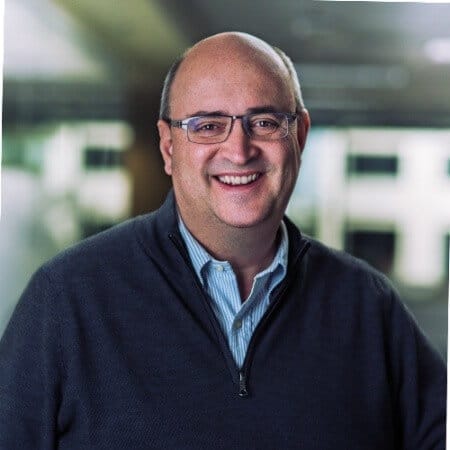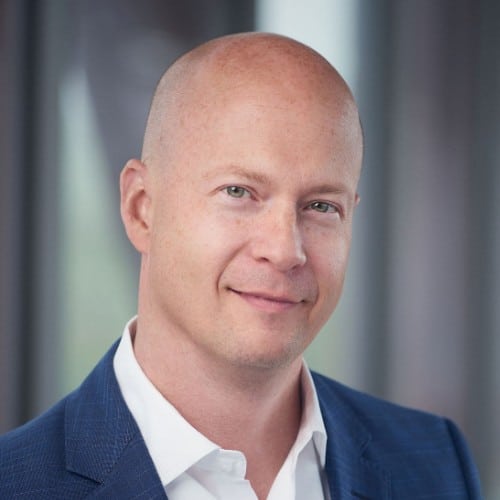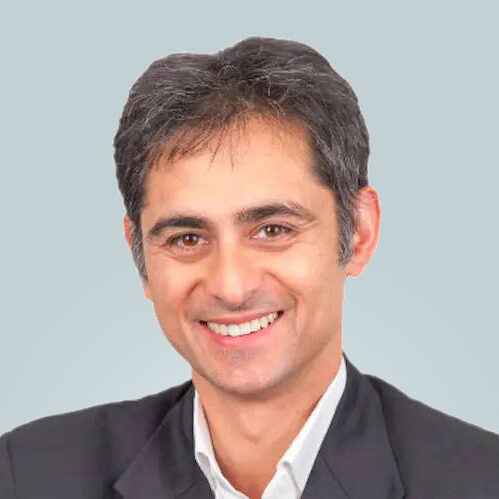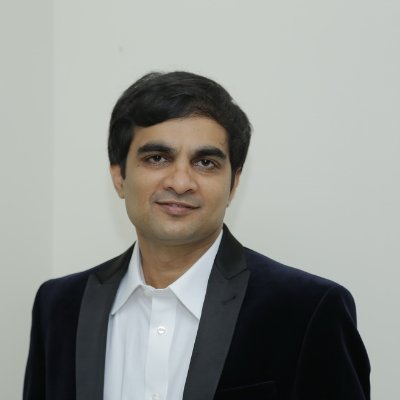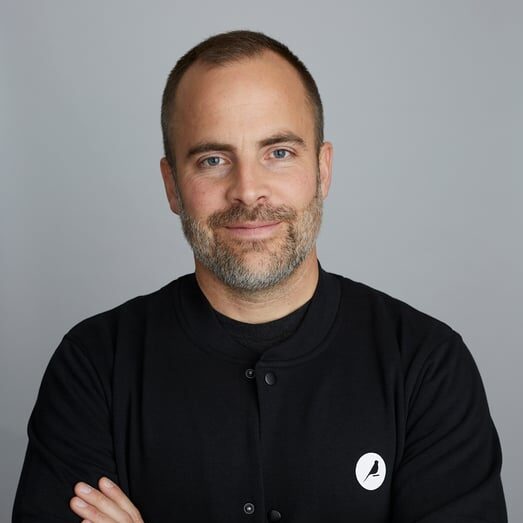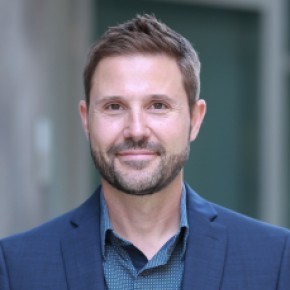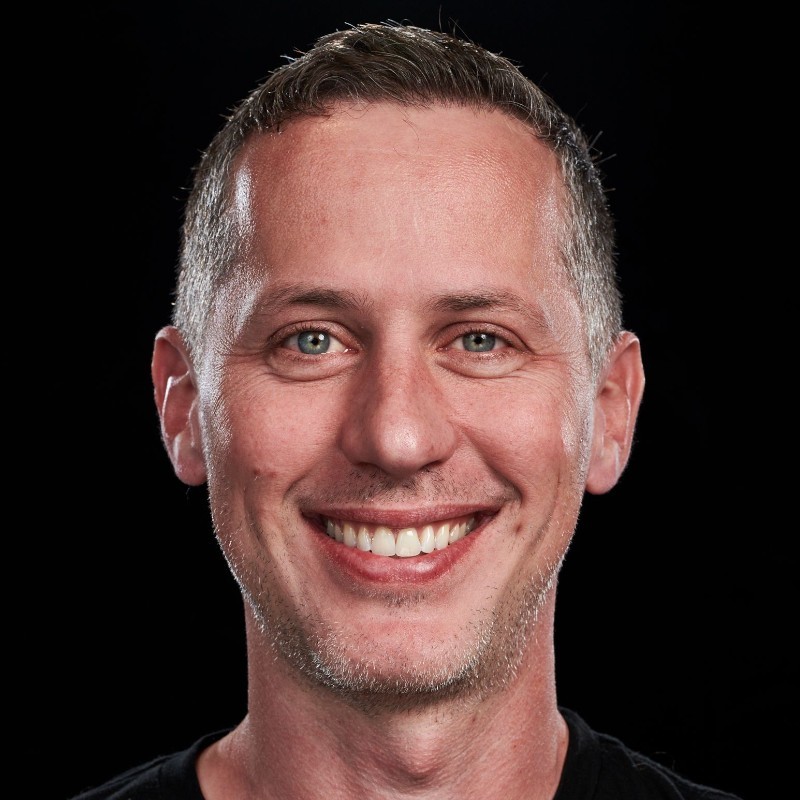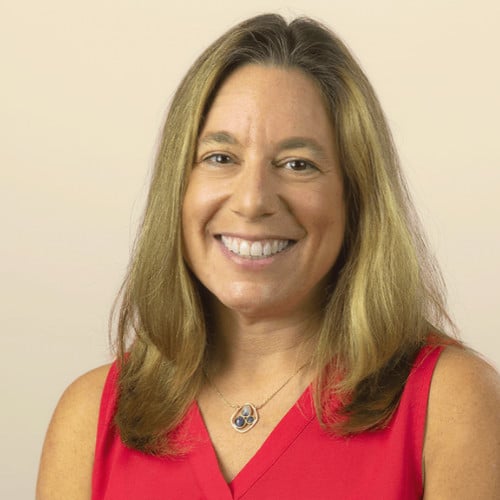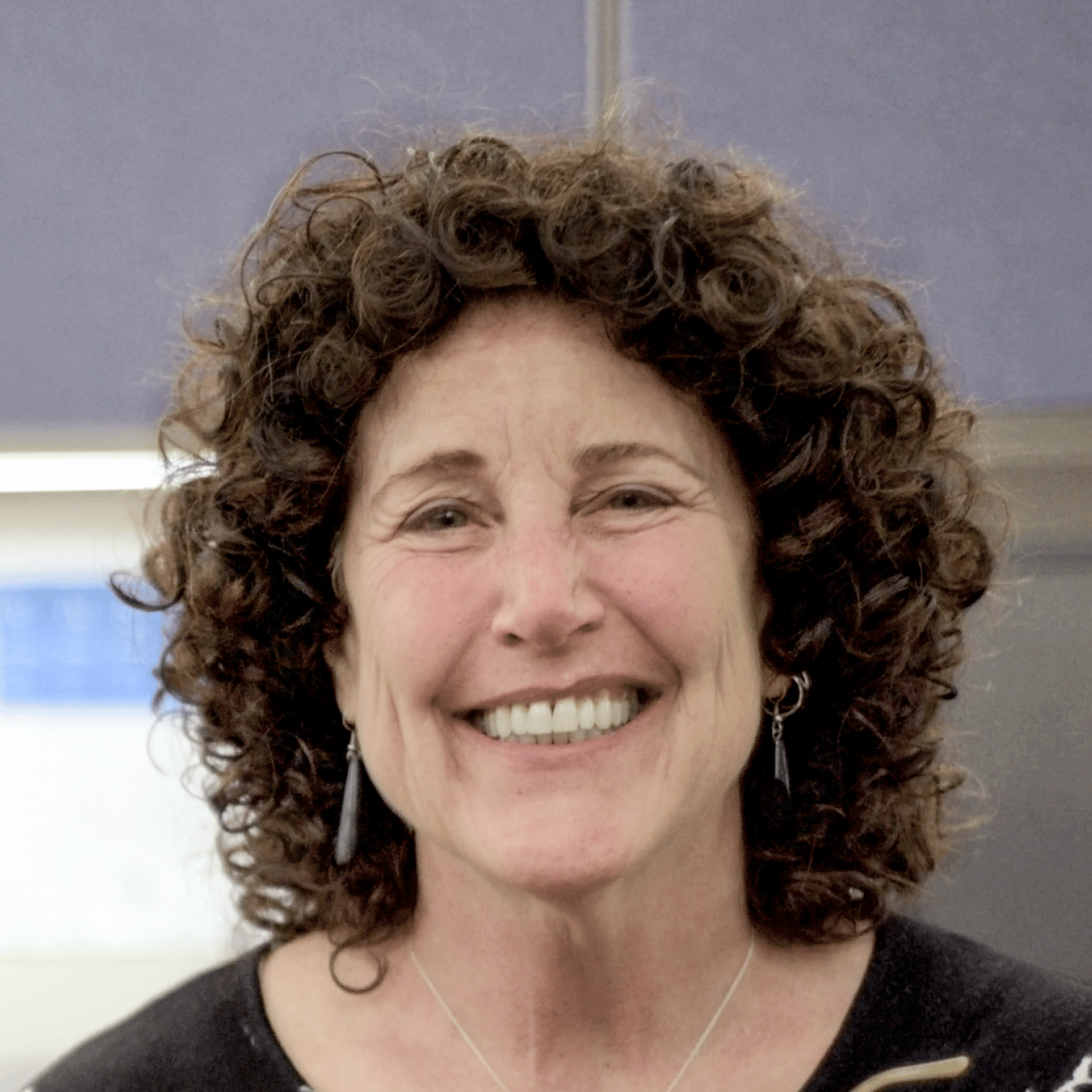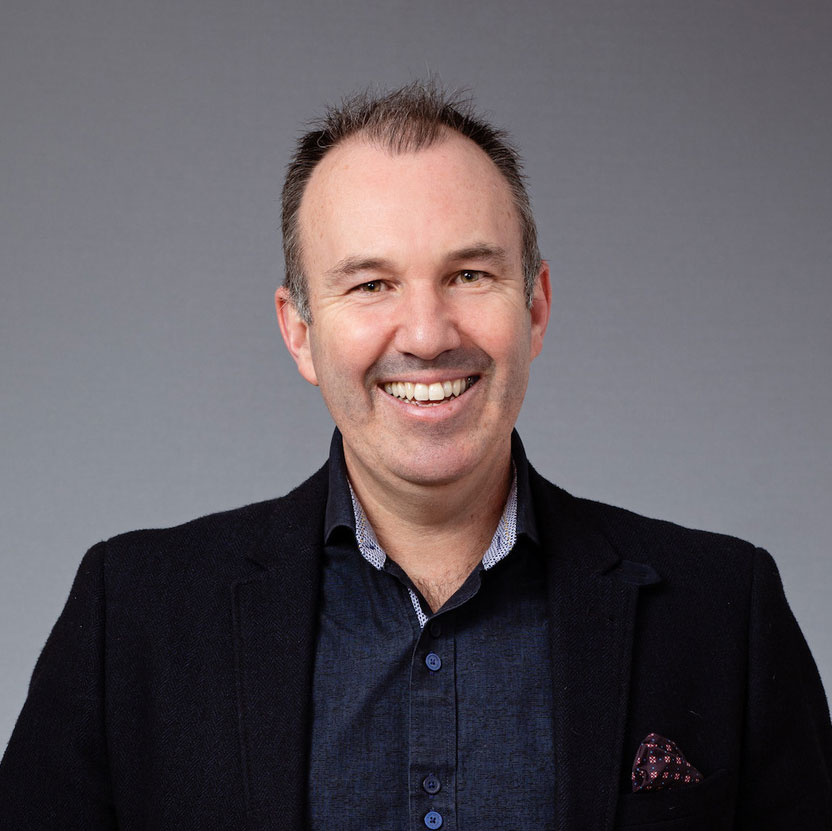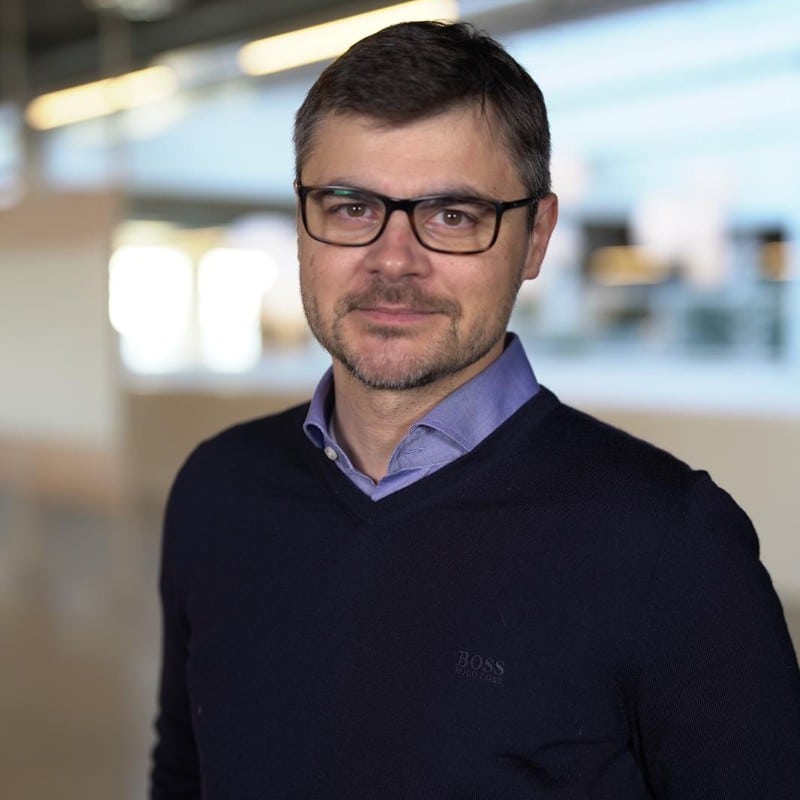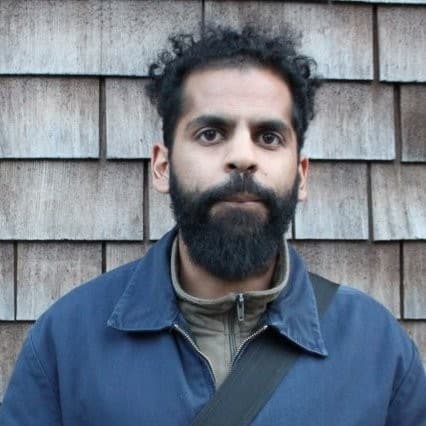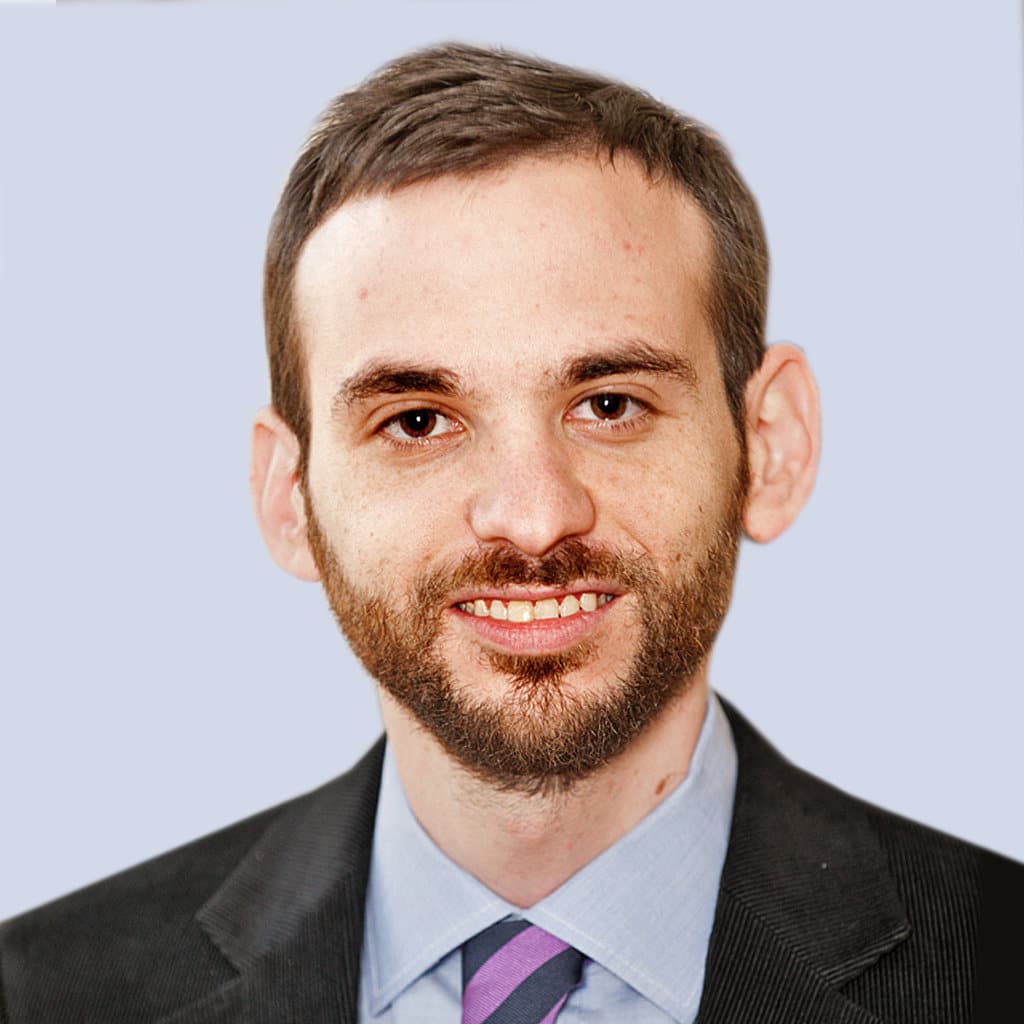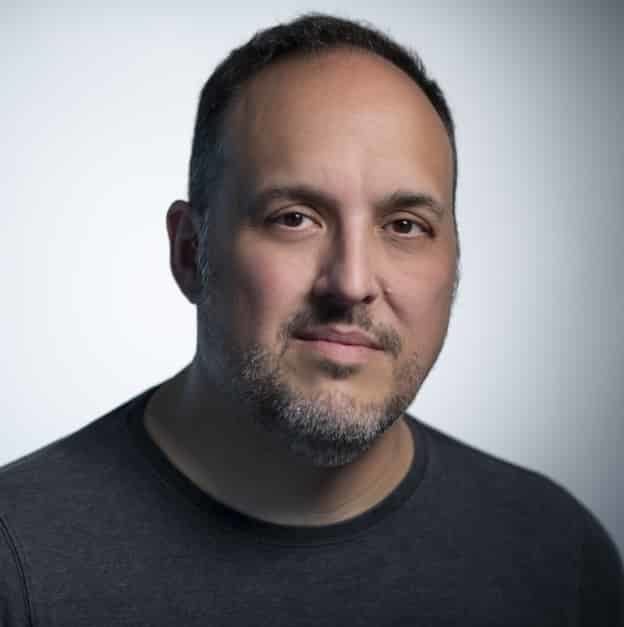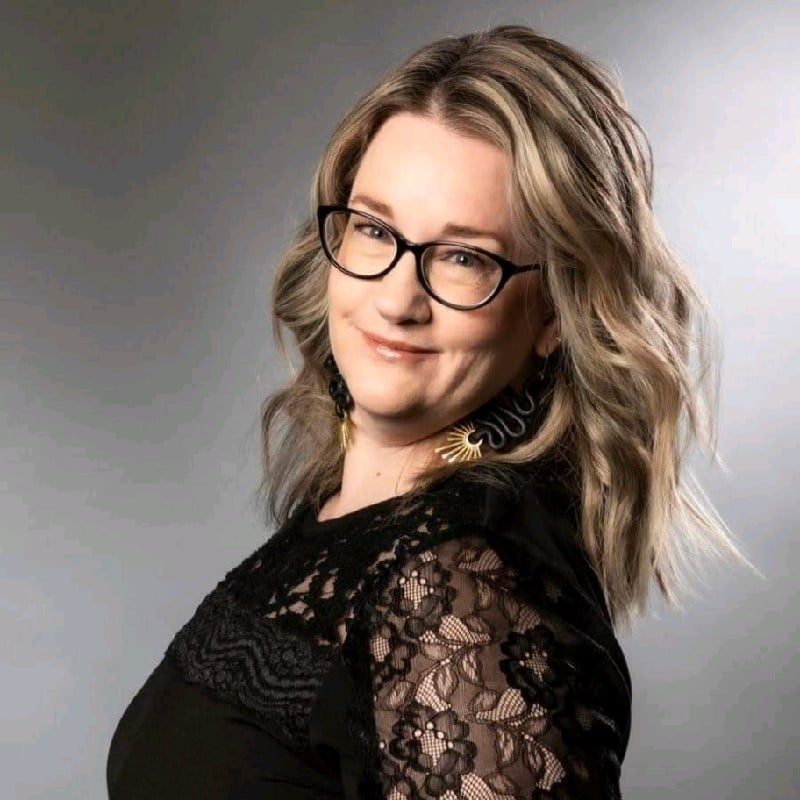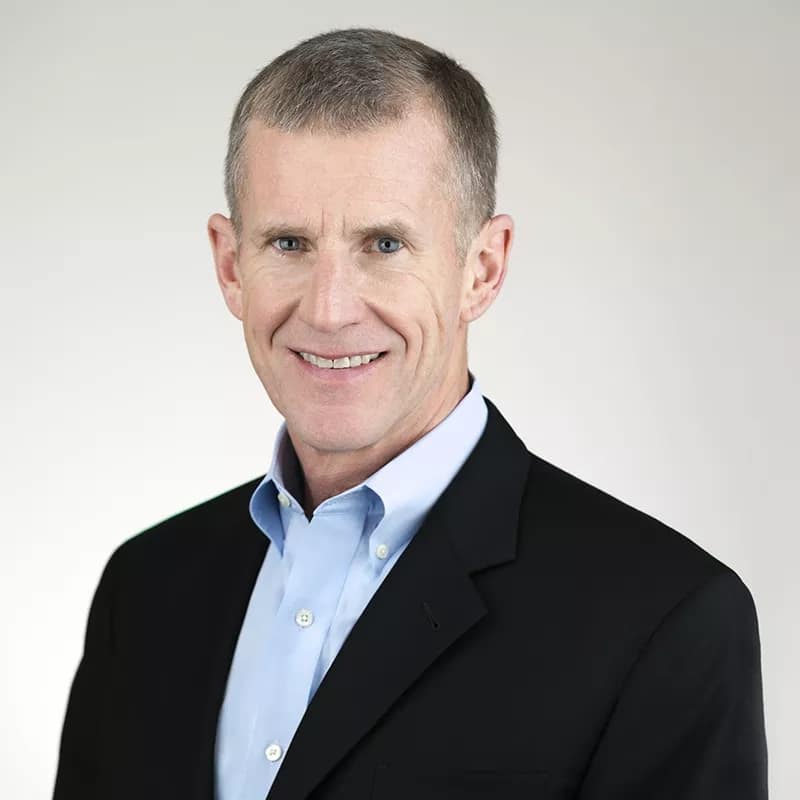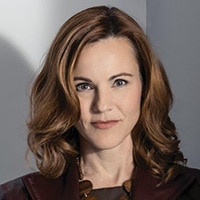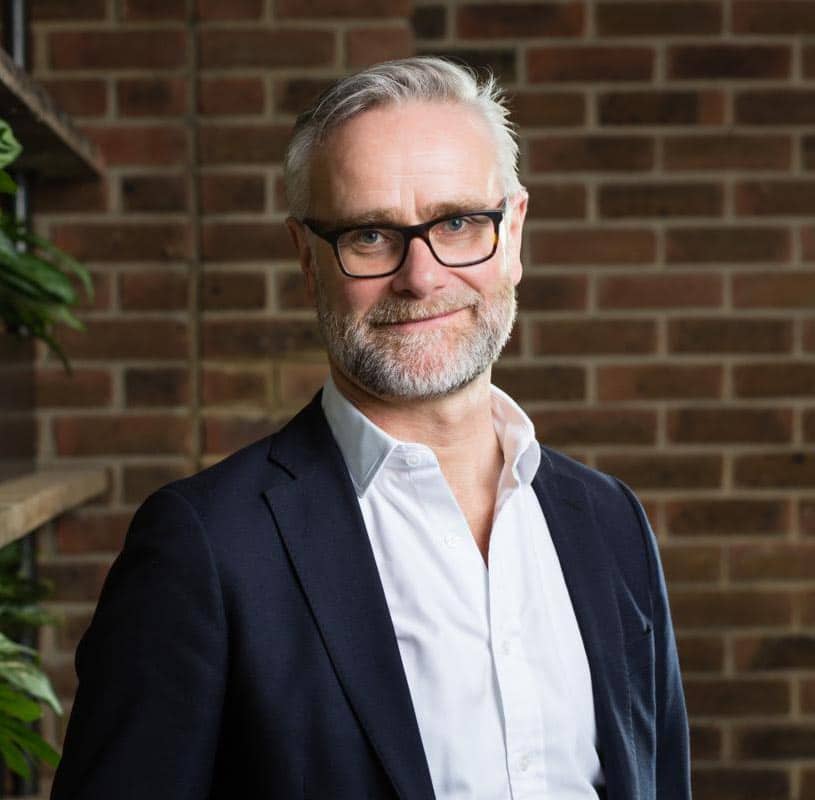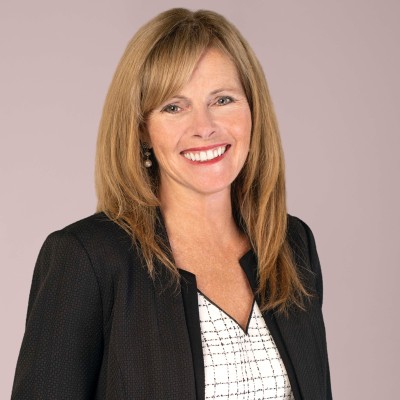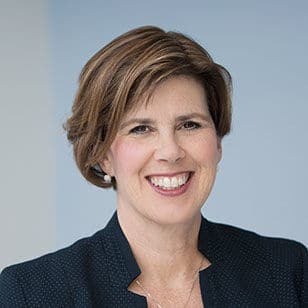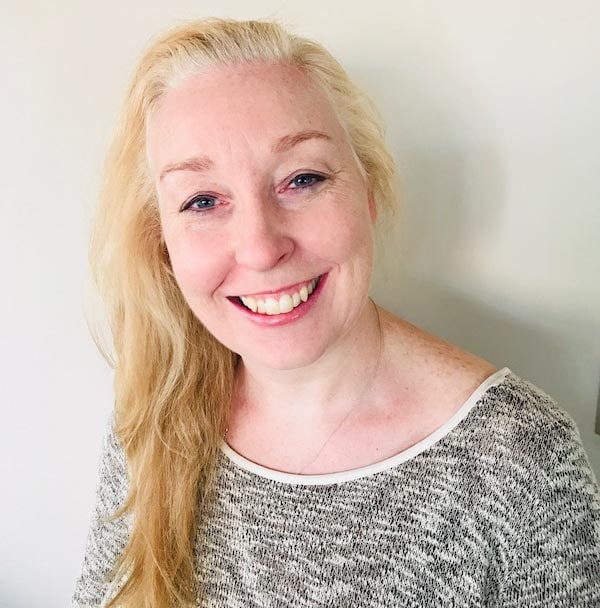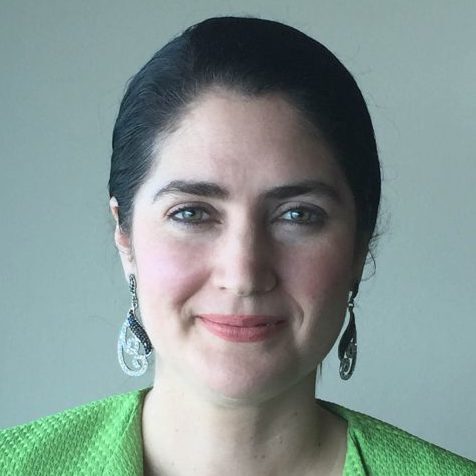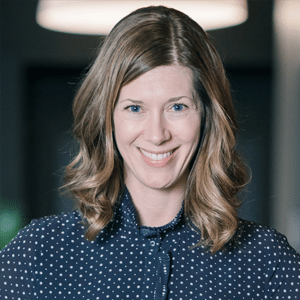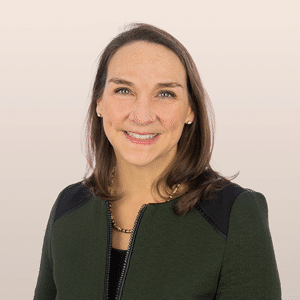Building the Company You Wish You Could Buy From
with Mike Capone, CEO of Qlik
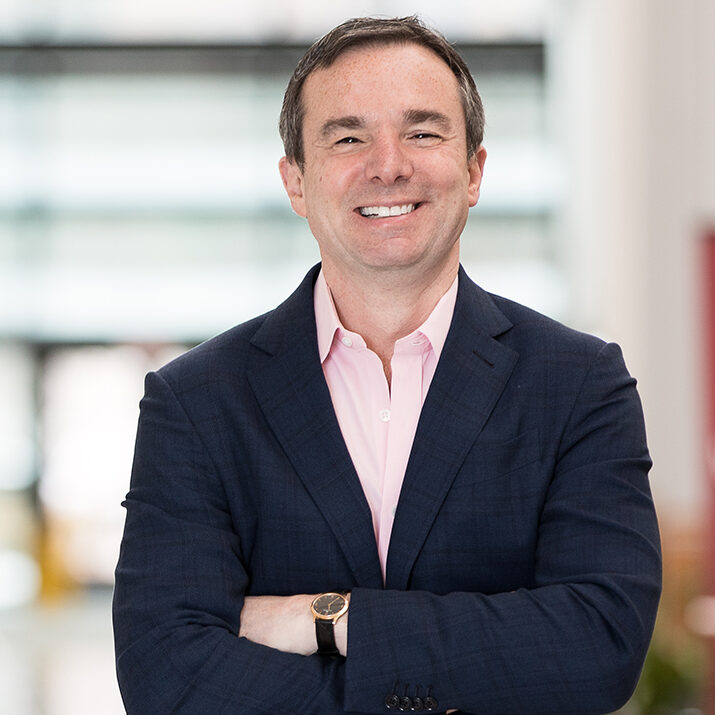
Mike Capone
CEO of Qlik
As CEO of Qlik, Mike Capone leads its mission to create a data-literate world — where people, businesses, organizations, and governments tackle their most complex challenges with data. His previous SaaS leadership experience includes COO at Medidata Solutions and CIO and head of product at Automatic Data Processing (ADP).

Satyen Sangani
Co-founder & CEO of Alation
As the Co-founder and CEO of Alation, Satyen lives his passion of empowering a curious and rational world by fundamentally improving the way data consumers, creators, and stewards find, understand, and trust data. Industry insiders call him a visionary entrepreneur. Those who meet him call him warm and down-to-earth. His kids call him “Dad.”
Producer: (00:01)
Hello and welcome to Data Radicals. In this episode, Satyen sits down with Mike Capone, CEO of Qlik. Mike is on a mission to create a data-literate world for people, organizations, and governments. At Qlik, he's using data to deliver products and solutions that revolutionize the business intelligence landscape. An industry leader, Mike has decades of experience in product development, data science, and go-to-market operations, and is one of the few to successfully transition from CIO to CEO.
Producer: (00:34)
This podcast is brought to you by Alation. Let's meet up at the Databricks Summit this summer. We'll reveal how Alation data intelligence is key to your data lakehouse success. Get a firsthand look into how top organizations are simplifying cloud complexity with Alation and Databricks. The Data+AI summit runs from June 26th to the 29th in San Francisco. We can't wait to connect. Learn more at databricks.com/dataaisummit.
Satyen Sangani: (01:03)
Today on Data Radicals, we have Mike Capone. Mike Capone is the CEO of Qlik, a business analytics platform dedicated to helping people tackle their most complex challenges with data. Mike previously served as the COO of Metadata solutions, a publicly traded provider of SaaS analytical solutions to the healthcare world. Before that, he spent 15 years at ADP in senior leadership roles and has spent decades leveraging the power of data through analytics to transform businesses and entire industries. In 2022, he was recognized as one of the most admired CEOs by the Philadelphia Business Journal. Mike, welcome to Data Radicals.
Mike Capone: (01:39)
Thanks, Satyen. It's really great to be here.
Satyen Sangani: (01:41)
So let's start with, I guess the news of the hour. When we originally had contemplated doing this interview, we did so before the Qlik and Talend acquisition was announced, and while I guess it's been more than a couple of hours or even weeks, it's still pretty fresh and would love for you to speak about that. To start, why did Qlik decide to acquire Talend and how long have you been thinking about the decision?
Mike Capone: (02:04)
I probably knew a little bit more than you did when we first talked about setting this up, and I knew that we'd probably have some really interesting news to talk about during this podcast. Honestly, Satyen, and I've been at Qlik five years and from day one Talend was an interesting kind of proposition for us because it's super complementary to what we do. In today's world, as you know quite well from your position, the end-to-end data store is really important to customers. It's no longer just analytics, it's no more just data warehousing. It's the end-to-end and raw data through modern cloud data lakes into actions.
So our ability to actually cover all those topics from data extraction — which is our Attunity acquisition — all the way through transformation and data quality, which now Talend will bring to us, coupled with our analytics platform and our automation platform, it just felt right to us and we were finally able to find a way to get the deal done.
The growth of Qlik — and how to grow further
Satyen Sangani: (02:51)
Yeah. Can you tell the listeners a little bit about the scale of the combined company revenues, employees, customers, products?
Mike Capone: (02:57)
Sure. When this is all said and done, we will be about a $1.2 billion ARR company. So, decent size and scale. And in fact, we like to think of ourselves as the last pure-play analytics provider at scale. When you think about the consolidation that's gone on in the industry, obviously we're bigger than just analytics and then we’re north of 40,000 customers with the combination of the two organizations together. So, really nice global-scale business.
Satyen Sangani: (03:22)
And you mentioned that you were thinking about this for five years, and I'm not exactly remembering the timeline, but I think that was before Thoma Bravo even acquired Talend in the first place. Is that right? Therefore, did you have something to do with Thoma Bravo's initial acquisition and was this sort of a chess move in a long series of contemplated moves?
Mike Capone: (03:40)
I know what you're saying because it does feel like that's how the timeline should look, but actually TB took Qlik private in 2016. I came in 2018 — so I joined at the beginning of 2018 — and we've done 10 acquisitions. Talend would be the 10th since I got there. So I had a pretty long list when I got there. Talend, as you know, back then was a public company doing quite well. I can't take credit for any kind of magic orchestration with TB that we actually plotted out: "Hey, you buy them, then one day we'll put them together."
Do I think that maybe they took some of my M&A updates and my M&A presentations on my list and use that for their business case? I darn well do think they did that. So I do take a little bit of credit.
Satyen Sangani: (04:15)
Oh, I'm sure you could take a lot more than a little bit of credit. I mean, these are all great to do on a piece of paper, but then you actually have to do the work of operationalizing which sales forces and which sales engineers and much more difficult, which products. And that's always hard work to do. How do you think of innovation in this context going forward? What I tell our team is like no matter what scale you’re at, it's always going to feel like we have 1% of the resources relative to the problem that we have. I'm sure that's true at a billion [dollars ARR] as much as it is at a hundred million or maybe it's not. Maybe you have infinite resources. But how do you think about prioritizing where you're going to invest in, what you're really focused on working on with the joint company going forward?
Mike Capone: (04:53)
Right. Well, this is why I love talking to other CEOs who've had a lot of operational experience because we don't have infinite resources. And you're right, the demand just expands to infinity, right? There's always going to be more work to do. I would say I would be less comfortable doing the Talend acquisition if we hadn't done a bunch more before this, including Attunity, which was a nice size deal. What we've been able to do is really build the muscles to integrate these acquisitions quickly.
Some of them have been small-product tuck-ends, but Attunity, for example, was a whole big thing: distribution, revenue, customers, etc. My philosophy is, always, these things don't age well. Some companies will say acquire and let it run standalone for a while, but my view is before you pull the trigger, you better have a plan to integrate the two businesses and that plan better make sense and it better have been informed by your customers in an outside-in view.
So we wouldn't write the check unless we absolutely thought that we were ready to do it. And then it's just violent execution. Have the plan and go after it. And yeah, prioritize. Obviously, when you're doing the integration, some things that you thought you were going to do have to go to the back burner. That's okay, as long as you're straightforward about it.
Insights + actions = the platform
Satyen Sangani: (05:53)
You mentioned this long track record of 10 acquisitions and Attunity a couple of times in particular. Give us a sense of the breadth of the product suite, and as you mentioned the pieces, maybe tell us a little bit about why Qlik is the initial platform. How did you think about the story if you're now telling it with hindsight 20/20, what are the pieces that made sense? Why did you acquire them and what needs were you trying to fill?
Mike Capone: (06:16)
The benefit is I used to be a CIO. Many, many years ago when I was at ADP, one of my roles before I was the full-time CTO, was CIO. So I had all of the data and analytics platforms at ADP. That was north of a $10 billion revenue company. So being CIO of a Fortune customer, those are my customers now. So I had a way I like to do business with partners, and that's the company that I wanted to build. So when I got to Qlik, first thing I did was I asked as many CIOs, CEOs, CDOs I could talk to, "What can I do for you? How can I be better?" And what they said was, "We love your analytics. We think you guys have industry-leading analytics. You solve really complicated problems. But my problem is way bigger than that. My problem is harnessing all this data that's coming at me, gigantic volumes and getting it in real time, more and more, data doesn't age well."
So the ability to actually do that faster, cataloging, curating, just getting it analytics-ready. By the way, the Snowflake thing feels real — it was five years ago, right? Turns out it was very real, but everybody was like, "I think I got to get my data into a modern cloud data lake." So that conversation was going on. And then on the opposite side, it was really about, "Okay, I've got analytics, I've got these dashboards everywhere. They're great, except nobody ever does anything with them. It's like looking in the rear view mirror all the time. Help me once I see something, do something.”
When I get an insight out of the analytics, I need to action it. And so that's what we went out to build. So when you look at the product set today, it starts with high-speed data replication, data extraction out of operational systems, into kind of these modern cloud data lake platforms: Snowflake and Databricks work with you guys, right, on the data streams and things. And then data catalog was one of our acquisitions. Data Lineage was one of our acquisitions. And then Talend obviously brings with it data quality and transformation capabilities, which we didn't have before at scale.
And then of course Qlik analytics, everybody knows. And the last piece is how to assist users do the analytics. So AutoML, Big Squid brings the data science capabilities into your analytics platform. NLP, natural language processing, allowing people to actually use real English or native language to interact with analytics. And then finally, the piece I love the most is the action. So the ability to actually, once I get an insight…
Once I know that my pricing is wrong, just go change it. Don't wait for somebody to look at a dashboard, pick up the phone, call somebody — just through our automation platform, be able to see that insight and then push a transaction into your point of sale system, into your CRM system, change it. So insights, actions, that's kind of the whole platform.
”Active intelligence” in action
Satyen Sangani: (08:37)
Is that what you mean by this concept of active intelligence? Is it the idea that you're not just calculating the number but you're pushing the number somewhere to actually do something? Is that the core of it?
Mike Capone: (08:46)
That's exactly right. It is that last piece, which is once you get the insight, which you've gotten derived from real time data, you've seen all the black swan events and things that have been going on. You can't rely on historical data models anymore. It has to be what's going on right now. But then doing something with it. You take a company like Aramark. They do food service. They do lots of different things. They do football stadiums, prisons, hospitals taking an Eagles game — I don't like the Eagles; they compete with my team, the Giants — but Aramark is there. And during those games, they're streaming data, not just data about what they're selling.
So they're streaming data, their point of sale systems, hot dog sales, hot chocolate, you name it. They're also streaming the weather, the score of the game. That's all coming back into Qlik. And in real time they're deciding, "Should we unfreeze more hot dogs? Should we change the price of anything? Is the game out of control? Should we just start shutting everything down because people are leaving?" And they just affect those changes. There's no humans in the middle. That's the active intelligence. It's things just happening automatically.
Satyen Sangani: (09:39)
Yeah, super interesting. I guess that activity is sort of made possible by this bundling that you've done. You brought so many components together. One of my board members spent some time at Netscape, and you'd tell me, Jim Barstow would come along and say, "There's two ways to make money in business. You can either bundle or unbundle." And it feels like the last, I don't know, 10 years of analytics software is this massive unbundling. Every single feature is a company. And you see that in the marketscapes.
There's a guy out of FirstMark Capital in New York who basically publishes this guide and is literally like, every logo is four pixels. At least it feels like that, right? And so you guys have now been... It feels like first mover in a strategy to bundle. Tell us a little bit, maybe not first mover, obviously there's the mega scales, but tell us a little bit about why now and why this bundling strategy is coming into play. Or maybe if I mischaracterize, you could tell me that too.
Mike Capone: (10:31)
So two things. One is, you're right. So first, you're right, it is picking back up again. And these things, there's always a cycle. It goes from like, "All right, I want a fully integrated platform." Everybody comes around and then it tilts back to best-of-breed and it goes back to integrated. So we've seen those cycles, but it really felt like the market was demanding the opportunity, not forcing. We don't force our customers to do anything but the opportunity to do more with a single solution versus having to cobble stuff together.
So you'd take today's world where we've got this best-of-breed data, all these data tools. Our customers are saying, "Look, if we could solve some of this with one vendor and more seamless integration, take some of that lift off, that would be helpful." But at the same time, we recognize that all of our customers — all of our big customers — have heterogeneous environments.
So we're completely open. So it's the best of both worlds. We're API to everything. We're completely open. We recognize you might want to still employ some best-of-breed strategy coupled with some more integrated one-solution strategy. The other thing that's going on in the market right now is cloud. I think if everyone is correctly moving to cloud, it's the right strategy, creates huge time-to-value, but nobody wants to be locked into any one cloud.
So what we saw was an opportunity to be cloud agnostic to say, "Look, wherever you want to put your data, whether it's in one hyperscale or three, we work with all of them. We don't want to be a monolithic single solution on top of one platform." And it's really resonating with CIOs and CDOs: "Look, I have to have options. You guys are great because you'll work everywhere." So those are the two things that drove the decision for us to go more platform.
The sales force strategy
Satyen Sangani: (12:00)
Do you think that as you proceed down this journey, how do you think about organizing your sales force? How do you think about organizing your go-to-market messages? Are you going mano a mano on features? Are you trying to go by industry? Are you trying to sell based on solutions? How should a customer digest you and understand you?
Mike Capone: (12:18)
It's the right question. A very smart, informed CEO question about how you set up your distribution. We try to start from the outside in, which is we try to start with a business problem, which is what business problem you're trying to solve, which is usually, “I'm trying to optimize my supply chain, I'm trying to diversify my supply chain, etc.” And then we work back from there.
Recognizing, as you all know, there are different buying centers. So I think very often the analytics buyer could be a line-of-business head. Could be head of HR or CFO or sales. Whereas the data integration buyer typically is going to be in the IT data architect space. And so the way we've thought about it is we still want to have one relationship with our customers, but we do have really high-end sales specialists that can tackle the most technical questions of each of those different buying centers.
What we are seeing, I think three, four years ago when we started setting this out, there's this slow pivot to looking at full platform and a convergence of buying centers or buying decisions. When we bought Attunity, we were betting that that would accelerate. It took a while, but with the pandemic and now with some of the disruptions happening in the world again — supply chain disruption, ports closing, so it's now closing — we've seen an acceleration of end-to-end thinking from our customers, which plays right into our hands.
Satyen Sangani: (13:28)
Does it make you lean toward perhaps looking at making the next acquisition of services acquisition or is that something that you've given any thought to?
Mike Capone: (13:36)
Without boxing myself in, I don't like services’ margins. I mean, we have a very nice services business. It's very much assisting our customers in terms of getting going. There's a beautiful ecosystem out there of global systems integrators. We have terrific relationships with Deloitte and Accenture and TCS and others. So I'm quite happy to have partnered with them on the big transformational projects and really, for us, just focus on more targeted services for us and really build our software cloud business.
Satyen Sangani: (14:05)
The interesting crop of folks who come in and sort of say, "Hey, we have all the software underneath the hood and we're sort of a technology-enabled service and we solve your problem." Less invoked today than it was before, of course. Palantir — I think they developed the software on their way to delivering services. You guys obviously have software that stands along on its own, but yet the stories and the outcomes… I can certainly see you going to a CIO and saying, "Look, just bet on me. I'm going to solve your problem."
That eye chart that you're seeing… that's pretty complicated. And if you want to go understand that, great, boy, you can just go with me. I mean, is that the centrality of the pitch or —
Mike Capone: (14:38)
It is, it is. Again, we'll work with you the way that you want to work with us. We do think over time people see the value in a more integrated solution. But when it comes to enablement, look, we want you to get started, but if we have to employ $5 million of services for $1 million of software that we sell, then at least the way we're building our business, that's not success for me. Right? You take a customer like Ford, who just spoke at our user conference. It's all very public. They're a data integration and a data analytics customer.
We did a fair amount of services to get them started, but now they're great. They're just going. They're building new resources and targets for their data, the integration, moving billions of data points a month. They're building analytics dashboards. They have every corner of their business using our analytics now, and they're pretty self-sufficient. Or they'll plug in any third party they want. They're not looking back at Qlik saying, "Okay, now you got to do the next thing for us." We're helping them with technology, but in a way that teaches them how to fish so they can be successful on their own.
Who does what for whom?
Satyen Sangani: (15:26)
Yeah. Makes a ton of sense. If you're listening to this podcast, and one of the things you said is, “We acquired a whole bunch of stuff, and one of the things that we acquired is catalog.” So catalog is a part of your portfolio. We obviously have a catalog here at Alation that does one of the major things that we do, not the only thing that we do. And then outside in, people look at this and they say, "Well, Thoma Bravo, they're invested in Qlik. They're they're invested in Alation. This is all very confusing.” Demystify a little bit of that for us. Talk a little bit about where you start, where you end, when you might talk to an Alation, when you wouldn't? How do you think about that?
Mike Capone: (16:00)
Well, I always start with the best part of this, which is we've done a conservative sizing of the total adjustable market and data and analytics. Look, if you add up what the vended TAM today, which is what the IDCs of the world will say conservatively, that's like 50, 60 billion. We think doing a bottoms-up TAM, it's more like 120 billion. So there's plenty of room for all of us hanging around this space. I think Thoma Bravo, being smart investors, knows the same thing.
You guys are a terrific partner of ours. We have lots of customers successfully using catalog technology and our data analytics or data integration, and that should continue. There's going to be different reasons that people make different decisions, and we just want to do what's the best outcome for the customers. I know that when we engage with your teams, that's the starting-off point, which is what's the best thing to solve the customer's problem?
We'll never close off. We've got lots of friends in the industry. It's really when someone — usually this won't be the largest company in the world, this will be somebody a little bit more mid-enterprise — would say, "All right, I want a turnkey-type thing. I don't have their IT resources to stitch stuff together.” That's a very different sale. But our commitment has always been super open. And look, we are finalists for partner of the year for Microsoft. We're fierce competitors on the analytics side, PowerBI and Qlik. On the data integration side, we drive plenty of business Azure's way. They love us. They love us. It's that kind of market.
The relationship between private equity and software
Satyen Sangani: (17:17)
Yeah. It's a very complicated ecosystem, and I'm completely with you. The markets are very big. And if you can help people do things 20% faster, that's the only way in which they're going to get competitive differentiation. So I'm totally there with you. Thoma Bravo is obviously an owner. Tell us a little bit about your relationship with them, how it is like to work with them, and they've been so prolific, particularly in the last two years. What's been your experience and how has it given you competitive differentiation?
Mike Capone: (17:44)
Yeah. They've been terrific, honestly. It's been a great choice for me and I think it's been good for Qlik. First, just general statement, from your past experience, making a transition from a perpetual software company to subscription and cloud in the public markets is absolutely no fun. It's not. So the ability to do that in private mode has been super helpful for me and for Qlik, just to take the wonkiness of the revenue fluctuations that come with that.
Thoma, first of all, they specialize in software. They specialize in software infrastructure, security application. So it's a pleasure. Everybody there understands the space really well. They're super great thought partners. I don't find myself having to go back to basics in terms of explaining what I want to do and how I want to run the business. They're very accretive to my strategy and what we're doing.
I would not have been able to do 10 acquisitions if it wasn't for Thoma. I have two people in corp dev, so they helped me with sourcing. They helped me with due diligence, obviously financing. So they've really been able to be accretive to my strategy of having this balance buy and build.
I've spent half a billion dollars on organic R&D, so it's not like we shut down that engine. That's still going on. But as you know, there's a lot of competition in the space. I had to move faster. They've been great in terms of supporting my M&A, and they're also quite patient. We filed to go public a year and a half ago, or right before 2022. Really glad we didn't. The markets went a different way, and that's okay. We'll just keep doing what we're doing and we'll keep our eyes open and see what happens next.
Satyen Sangani: (19:07)
Yeah, it's super impressive. Do you find that the private equity folks, generally speaking, get painted with this brush of “cut costs at all expense” and scorched earth? Is that consistent with your experience?
Mike Capone: (19:19)
Not at all. Operating companies efficiently is not a bad thing. I think the public markets are coming back around now to what I think the private investors have seen for a while now, which is you can still grow and run a very successful balanced business and operate efficiently.
There was this mindset of growth at all costs, and I think that's rotating back around. So it's not scorched earth. It's not any of those things. I just wake up every day just saying, "Are we running as efficiently as we could? Is every dollar going to solve a customer problem?" And if it is, then we're good. If it's not, then we re-look at it.
But I think balance is a much better word. We're not just driving margins. You can grow a company, mid-teens ARR. You can have decent profit margins. That's a pretty nice company.
From CIO to CEO
Satyen Sangani: (20:00)
Yeah. It's interesting. That's pretty consistent with my experience with them. We're in different situations and that they're a minority investor for us. Amongst many minority investors in your case, they're a singular owner, but I don't think their philosophy — at least in my experience, they're pretty authentic to what they believe. And they have been the voice of more disciplined growth, particularly in this moment.
I think it's been super healthy. I mean, I think in this market and in this world where money's way more expensive, customers are going to get differentiation by investing in a business that's going to sustainably innovate. So it's been pretty interesting to have that experience from our end as well. You had mentioned that you sort of grew up, or at least part of your career, early career, was as a CIO. And now you're a CEO. And we often don't see, or at least I don't often see CIOs make the transition to CEO because there's a characteristic risk aversion in one role, which is literally just would be pathologically destructive in the other role.
If you just sat there all day as CIO or CEO and tried to control risk all day long, that would be a pretty hard way to run a business. Tell us a little bit about that transition. How did you make it and what were the things that had to change and what did you pick up from your training that helped you do the job as CEO?
Mike Capone: (21:10)
Satyen, that's a great question. I chuckled because I remember I was at one of those CIO conferences and they had a panel of recruiters. So it was all the ones you know. It was Heidrick, it was Korn Ferry. It was all the top executive recruiting firms. Somebody raised their hand and said, "How does a CIO get to be CEO?" And they all said, "Doesn't happen. Never happens." It just sucked the air right out of the room, just crushed everybody's aspirations.
Back then I felt like there was an opportunity to show something different and to maybe prove that it can happen. Look, CIOs — it's interesting. They have a unique perch across a business. When I was CIO of EDP, I was running the CRM, I was running the quote-to-cash. I was running a lot of the back-office systems, but you get a good view of the business. That said, that alone didn't do it.
I had to volunteer to do tours of duty out into operational jobs. Sometimes that meant taking a step sideways or backward just to get the P&L experience and get the operating experience. But then in today's world, I don't think there are going to be many CEOs of the future that aren't super tech savvy. The days of somebody coming up through an administrative function becoming CEO without being super tech savvy, I think are low.
Actually, I think we're better positioned now than ever before to get to an operating job. What it would say though is for me it was volunteering to go work in a global go-to-market, HR payroll business, or to take on large-scale projects, take some risks in my career. And then the other thing I did was I realized early on that I was writing COBOL code. I was doing things that I didn't want to do for the rest of my life. I went back and got my MBA at night so I could understand what people are talking about and they said EBITDA and things like that, and that was hard.
I was working full time, I didn't have the money and I did it. And I thank God because it just gave me a baseline that I didn't have with my engineering degree that I really needed.
The importance of networking
Satyen Sangani: (22:58)
We have a lot of senior data leaders who listen to this call. What advice would you give them if they were interested in making that transition that you've now proven is possible to go make?
Mike Capone: (23:05)
So the way I did it was I built out my network. I found as many people as I could who had mentored me outside of my immediate space. So I got very friendly with some business people at ADP, who I'm still friendly with today, and I asked them first for advice and then later on for opportunities. “Give me a shot at doing something that's a little bit far afield. Rather than be a data architect, I want to work for you and your business.” That's the best thing. And look, we're all introverted by trade.
You don't pick writing code in a cube because you're very extroverted. So you’ve got to push yourself. And it's uncomfortable to this day. It's still uncomfortable for me. It doesn't feel that way as I jump on a podcast with you, but I still have to psych myself up to be out there. But that's what you got to do. It doesn't come to you. You’ve got to go to it.
Satyen Sangani: (23:47)
How much of your time do you spend internally or externally? Do you describe yourself as an operational CEO or a go-to-market CEO? I mean, now that you occupy the chair, what's the percentage of time between inside and out?
Mike Capone: (24:00)
I try to spend 60% of my time on things that are either go-to-market, so sales and customer success on out. And that could be direct customer calls or meetings. I'm headed to Asia next week for a bunch of customer meetings, etc. And then just the reality of life is that you got to spend the rest of that 40% on things to keep the company running efficiently, board meetings, those types of things. So that's the balance I strive for. Some weeks are better than others, but so it goes.
The joy of customer success
Satyen Sangani: (24:26)
What's your favorite part of the job?
Mike Capone: (24:27)
Customers. I'm sure it's the same favorite part of the job for you, too. Particularly with my background, because I have instant credibility when I come and I talk to the CIO and they're talking to me about all the challenges they have. I'm like, "Yep, I totally know." I was CIO of at a brokerage business, a payroll business, insurance claims business. So trying to work across all that, but just hearing and helping and solve problems, that's the best part of it. And then when a company like Ford gets up on stage and talks about how Qlik has helped them modernize and get into the electrical vehicle business, things like that, how could it get better than that?
Satyen Sangani: (25:00)
Yeah. I mean, it strikes me that you're building the business that you would've liked to have been sold as a buyer, which is obviously a really authentic way to come to a conversation. In this recession or downturn or whatever it is that we're in the midst of in the technology sector, there is certainly a bias toward — at least I've seen as bias, maybe you haven't — toward shorter ROI, a shorter-term ROI, meaning I want a return, I want it to be more definite and I want it to come sooner.
Often data is a little bit more speculative. There's certainly a high-standard deviation in the ROI, but you don't necessarily know when you're going to go get it. What are the conversations that you're having with CIOs right now, last three months, and can you recall any of them? What are the themes that you're seeing, if that one or others, and how do you convince them to move forward and how do you think about what they're feeling and thinking right now?
Mike Capone: (25:51)
I'm seeing the same things you are, without a doubt. I think first and foremost, now is the time to get closer to your best customers. They're the ones who sustain you through these periods of economic ups and downs. You'll still get new logos, but they're going to be harder. The business case hurdles are going to be tougher.
But if you've already been successful inside of an existing customer, you should be leveraging those relationships. The reality is, for both of us and both of our companies, companies need data and analytics now more than ever. How are you going to navigate this uncertainty? This is going to go back 80 years to figure out — let's have the world like this: global pandemic, geopolitical risk, wars, inflation. How are you going to navigate that?
You're going to navigate it through data. So the conversation like, "Hey, we don't want to spend any more money on data and analytics because the environment is tough right now," is actually counterintuitive. The reality is you need data and you need real-time data to get through it because your old data models are useless. So those are the conversations that I'm having.
One of my favorite stories: Urban Outfitters. Talk about disruption, pandemic. Teenage girls back to school. That's their selling season and it didn't apply to them. Everything they thought they knew about when they were going to sell a lot of stuff went out the window. We partnered with them. They came to us and said, "How do we get through this?" We rebuilt their entire data pipeline, collapsed a bunch of data lakes, got real-time data, got them to reposition everything online and in their stores to adjust to teenage girls being on Zooms instead of in class.
And if you talk to them they'll say, "Yeah, you guys helped us through one of the toughest periods of our company." And so that's the conversation that you need to be having now. It's like there's an existential threat out there in terms of how fast things are changing. Can you help them — with data and analytics — be better?
Navigating rough economic times with data and analytics
Satyen Sangani: (27:29)
Yeah. I'm obviously a Kool-Aid vendor, as it were, but it's like you need to be smarter in good times because you need to be able to take advantage of the opportunity and bad times. You need to avoid making really stupid decisions. Both of those things require data.
Mike Capone: (27:42)
There's a McKinsey study that’s out right now that shows spend is down in every category except for two, which is data and analytics, and security. Right? Exactly what you would expect.
Enabling data literacy
Satyen Sangani: (27:50)
That's true in the macro. I guess it's also true in the micro. You talk a lot about data literacy and enabling people within your business to be data literate. Do you have a data literacy program within Qlik and what does that look like and how much investment do you put in it? Or actually, I shouldn't presume.
Mike Capone: (28:08)
It's actually completely agnostic. So let me start with the foundation. We've got a whole foundation of free data literacy. You go to our website today and click on it and you can take a bunch of courses. It's part of a consortium that we form with a number of other companies because that's sort of a societal obligation that we have. We think that being able to work with data and being data literate is as important to today's workforce as reading and writing was at the turn of the Industrial Revolution when that whole thing started off.
So the world has to get there. We have to get the workforce comfortable working with data. So that's over. And then we have a much higher-level offering where CDO comes and says, "Look, I got to upskill my workforce and then we'll put together a custom program for our customers."
But again, it's a loss-leader for us. We're not trying to make money on it, we're just trying to make our customers successful. But it is critical. And my daughter, when she tells me all the courses she wants to take in high school, I'm like, "It's great: AP statistics, number one." As long as you take that, then you can take whatever else you want. I just think it's that critical.
The Talend factor and data mesh impact
Satyen Sangani: (29:03)
Yeah, for sure. How does Talend factor into this idea of data literacy? Tell us what the direct and indirect linkages are in terms of that thinking.
Mike Capone: (29:12)
The term, it's already climbed into the overused category, but this concept of data mesh and being able to actually organize data in a way that, instead of pushing all the data into one giant place, you actually have a federated model where data can be either left in place or left in multiple places, but much more consumable by the business. What Talend will help with — what you guys help with, what everybody really needs to be thinking about these days — is this kind of data mesh concept where it's impractical to bring all the data to one place.
So how do you federate it out and how do you get your end users, your business users, to be most successful using data? So that data has to be curated, cataloged, analytics-ready, formatted, where the business can use it. There has to be instant feedback loops to be able to correct data quality issues and things. Talend is really good at all that stuff on top of the strategy that we've already been building, which was we've got Qlik ports, which allows you to put our ticker analytics engine, put on top of data in places. So it just adds to our strategy around data mesh.
Satyen Sangani: (30:09)
Yeah. We talk a lot about data mesh too, and I think for me, this idea of everything not being in the same place is the fundamental premise. I think back when we were growing up, there was this concept in analytics of the “single source of truth” and it's all going to reside in one place. Every time I heard that, I was like, "Ah, that just doesn't make any sense. Every time I look around, there's a new system that's a source of truth."
But it does feel like a lot of people still don't quite know about the concept, don't quite know what it is, what it means. Is your experience that this is something that your customers are asking you about more? Are you evangelizing it more? Where do you see it in the hype cycle of adoption and customer awareness?
Mike Capone: (30:50)
First of all, you're right. Those were those $50 million data warehouse projects where you're going to get every system feeding into some giant data warehouse and nobody ever survived them.
Satyen Sangani: (30:58)
It sounds awesome.
Mike Capone: (30:59)
It sounds great. Nobody ever survived those projects, though. I think everybody conceptually now gets it. I think the industry's been good at finally coming up with this terminology around data mesh to actually make real the thing that we thought about, which is just — my head is going to explode. I forget about just my big operational systems, but now look, third-party data, it's coming in cloud systems, etc.
Mike Capone: (31:19)
I can't move it all, so how do I harness it? We had our executive advisory board, and this was the topic they wanted to talk about. These are top executives and our top customers, and even they were saying, “It's still early. I need to get my arms around it.” I worry about anything getting overhyped. But I do think that we in our industry, like you and I and our peers, we have to help customers solve this because there's just no way you'll be ever get full value out of your data assets unless you can support this model.
Data literacy for all
Satyen Sangani: (31:42)
There's a lot of hype around a lot of these things and broadly defined, but this is a concept that I think most people should be paying more attention to. Just cutting back to data literacy, one of our guests recently was Wendy Batchelder. She's the CDO at Salesforce. She has this counterintuitive take, which is that data literacy is something she doesn't talk about. She doesn't talk about it because in her view, people don't want to be admitting that they're data illiterate or you don't want to go to somebody and be like, "Ah, you need data literacy” because that makes them seem like a not very sharp tool in the shed. Is that how you have seen it evolve or work out? I mean, you guys obviously talk about it a lot. Is that a foreign thought?
Mike Capone: (32:20)
Not to me. I have 38,000 analytics customers. I'll let the Salesforce Tableau results speak for themselves in terms of how they do and how they approach things. But from my perspective and my customers, particularly the large ones, they're all trying to solve for this problem. I don't think there's any question that the companies that leverage data and analytics the best going forward are going to have a big competitive edge.
I think admitting that your workforce could be better and doing everything you can to skill them up, I think is a critical function of every company right now. So that would be a minority view. Maybe they know something that I don't know. But I'm pretty confident. Given my perch in the world that this is an important topic, how you go about it? How you deliver it? How you bring people into it without making them feel insecure about it. Yeah, you could talk about that stuff all day long, but I tend to be more direct about these things. Let's just go do it.
Maintaining long-term landscape leadership
Satyen Sangani: (33:10)
When I was sort of coming into the analytics world and started at Oracle, started right around the time that Tello was founded, Qlik was then coming up. I always remember you guys as being sort of at the vanguard of the BI space and competing head to head. Do you still feel like those guys, Power BI, is the landscape the same? Obviously some elements must be, but what's changed in the world of BI in your review and why are we still seeing so many BI companies founded in a world where it feels like you guys did a lot of the innovation?
Mike Capone: (33:42)
So this is our 30th anniversary this year, if you can believe that. So Qlik is 30 years old this year. We had our user conference in Vegas, and I stood up on stage and I talked about that. My team was like, "Well, should you talk about it? It makes us sound old and not cool." And I was like, "Absolutely not." I said, "It makes us sound innovative and resilient. We're still standing." Everybody else has been gobbled up or vaporized or hit a wall. We're still here: 13 consecutive years in the Gartner Magic Quadrant for analytics, the leader's quadrant. We're doing something right.
I think what we do and why our differentiation remains is our associative manager and memory engine solves really complex analytical use cases. We can do that by bringing disparate data from different sources at scale and analyzing and finding patterns and what else we can find which is different than SQL-based tools, as we know, which got to know the questions you want to ask before you ask it.
So we're still solving fraud detection problems for credit card companies and supply chain problems for big telephone companies. No one's been able to replicate that. And quite frankly, it's really hard. The guys back in Sweden, I give them tons of credit, they came up with something great. We still win those deals. Now, is there a place for lightweight desktop analytics tools? Can we coexist with them?
Sure. That's our strategy. That’s great. You want to use Power BI for lightweight desktop analytics use cases. That's perfect. That's great. It's probably on everybody's desk already. Go crazy. But if you want to have a game-changing solution to an enterprise analytics problem that's really going to transform your top and bottom line, it's a Qlik problem.
Satyen Sangani: (35:08)
Yeah. I mean, this coexistence-fact reality, I mean I'm sure given that you are now spreading your wings over so many different elements of the data state, that core idea of coexistence has to continue to evolve. With all of that, I mean, you're obviously having to invest in a whole bunch of platform capability in addition to having to invest in the native capability. And one of the challenges that comes out of that is that customers sometimes think you solve a problem, but maybe you don't completely solve a problem.
So how do you manage that? How do you manage to clearly communicate to customers what you do, what you don't do, what they should come to you about, what they shouldn't come to you about? Because in a confusing landscape, that can be pretty tough.
Mike Capone: (35:46)
Yeah. Look, 90% of our time is trying to make sure that we qualify accounts and customers thoroughly and clearly because you never want to be in that situation. You never want to be in either end of that situation. One end of the situation is they're just looking for cheap, which is not going to be us, and they just have a single-source SQL database. I tell sales to stay away from those commoditized. And then on the other end it's like you overpromised and the customer ends up being usually disappointed that you promised them.
So our space, which is very clear, is what we do, which is the data integration, data transformation and analytics, persistence layers, cloud data lakes, all that stuff. We're agnostic and that's how I get along great with Microsoft. We do things to help them. We compete in other areas. We're super honest about it with each other.
I think if you have that and you build that credibility with your customers, we have amazing gross retention, amazing net retention, and it's because we're always honest. And then the other thing is, sometimes cloud is good for you and not good for your customers. So we see a lot of our competitors who had premise-based estates trying to force their customers to go to cloud without a lot of value prop there. It's good for the vendor, but it's not necessarily good for the customer.
For us, we don't do that. This is my CIO background. I hate when vendors do that to me. Help me solve my problem and if cloud is the best way to solve that, let's do cloud together. If you've got a beautiful premise-based solution that's working, let's continue to support that and let's build all your new stuff in the cloud. And you get a lot of credibility when you do that. Start with what's good for them. Usually that takes care of itself in terms of your results.
The Talend factor and data mesh impact
Satyen Sangani: (37:13)
You mentioned the importance of training your sales team and letting them know what you do, what you don't do, what's a good deal and customer, what's a bad deal in customer circumstance? Of course, over time, projects and customers, even internally, change and there's drift. They were buying A and then somebody two years later it turns into B. How often does that happen to you? Or do you find that actually in your case, because you're selling a business solution, those business solutions tend to be pretty engineered well and have a longer life?
Mike Capone: (37:43)
It does happen. Regime changes are a fact of life. So you have somebody who comes over, they bring — IT is notorious for like, "Hey, I'm going to bring my team from my last company over." One of the things we did when we bit the bullet and went to the subscription and then cloud model is we built out a fairly robust customer success function.
I remember at the time it was a big investment and it's like, "Wow, this is going to take a while to show return." But we knew we had to do it for that very reason, that customers now vote every year on whether they're going to continue to use your stuff, whether they're going to use more of it or less of it. And so we hired an amazing executive from Autodesk to come over, run our customer success program, and we stay super close to our big customers.
We make sure we see that happening. When we start to see either a drift in requirements business model or a drift in just executive support, we're all over that.
The hardest part(s) of being a CEO
Satyen Sangani: (38:29)
Yeah. It's always a challenging thing. Maybe the last question is going back to your role as CEO, because just on a personal level, I'm always looking to learn and I think it's all instructive for other people who are running things. What is the most difficult part of your job?
Mike Capone: (38:40)
In our space, everything is super fast-moving. I was in HR payroll. It was kind of like, "Okay. We've been paying people."
Satyen Sangani: (38:48)
People still need to get paid. Every time.
Mike Capone: (38:50)
With the Affordable Care Act, it was super exciting. It was like, "Oh, cool, let's go. Let's go do this." But this weekend I was working all weekend on the future of ML/AI in the wake of large language models and ChatGPT and things like that. We've got a really great story, but it's like, "Okay, someone is presenting at a conference this week." The velocity of which innovation happens in our space is just faster than anywhere else. It just is. And keeping up with that, because I think you're probably like me. You always feel like no matter how much you read, no matter how many people you talk to, you're always just a little bit behind. And that's the hardest thing for me — is trying to keep up with the innovation, make sure I'm having enough conversations with folks like you, comparing notes because there's not enough hours in the day. But if you don't force the discipline to do it, then you're really in trouble.
Satyen Sangani: (39:34)
So true. When I first founded the company, I remember I'd tell my wife like, "Oh, just wait until we get the series A then it'll be better." I'm like, "Oh, and then when this milestone happens, then it'll be better." And then when I hire this person, then it'll be better.
A couple years ago, she came to me, she's like, "Dude, it's never going to get better. Just as long as you're doing this job, you're always going to be fighting." But I think there's a lot of coolness in that fight, and that's what leads to an interesting life, and it's a privileged job to have.
Mike Capone: (40:05)
I don't think either one of us should happen any other way.
Satyen Sangani: (40:07)
Yeah, 100%. Well, Mike, I always enjoy talking to you, and I think now the listeners appreciate why. So thank you for taking the time and look forward to doing more together.
Mike Capone: (40:16)
Satyen, it's always great to talk to you as well. Thank you so much. I had a lot of fun doing this, so thank you.
Satyen Sangani: (40:24)
Mike’s career has been nothing if not unconventional. As a CIO-turned-CEO, Mike understands how the risk aversion of the former doesn’t mesh with the latter.
Regardless, Mike knows that CIOs who make the transition have an advantage; they can bring unique tech awareness to the CEO role. And as a modern CEO, it’s no longer enough to be purely operational. Future CEOs have to be tech savvy to keep up with the rapid pace of innovation.
In times of economic downturn, there’s a bias toward short-term ROI which data can’t always give us. Yet data is critical to helping businesses navigate uncertainty. Trusted data creates a life preserver in times like these.
So for any data leader keen on the corner office, it’s important to get out of your comfort zone. Data people are often introverts by nature. But advocating for data — while building your network — will give you a leg up.
Thank you for listening to this episode, and thank you, Mike, for joining.
I'm your host, Satyen Sangani, CEO of Alation. And data radicals, stay the course, keep learning and sharing. Until next time.
Producer: (41:38)
This podcast is brought to you by Alation. Subscribe to our Radicals Rundown newsletter. You'll get monthly updates on hot jobs worth exploring, news we're following, and books we love. Connect with past guests and the wider Data Radicals community. Go to alation.com/podcast and enter your email to join the list. We can't wait to connect.
Subscribe to the Data Radicals
Get the latest episodes delivered right to your inbox.

